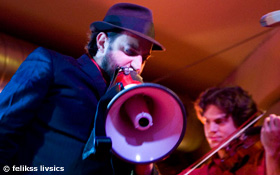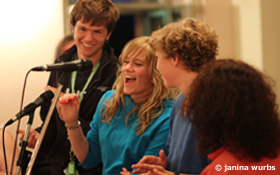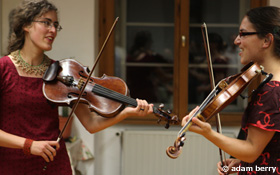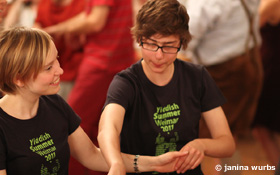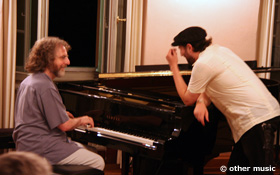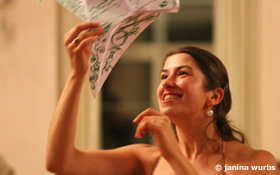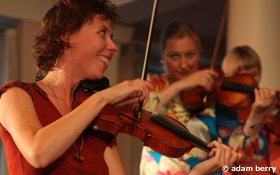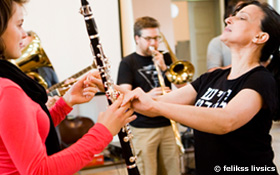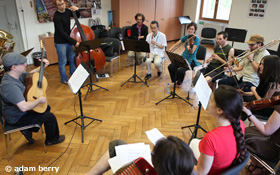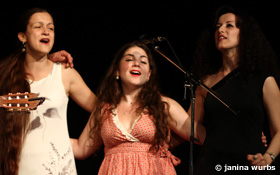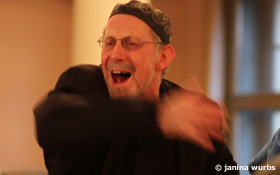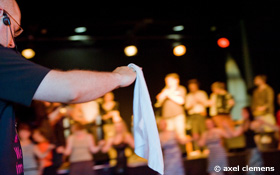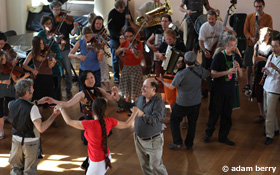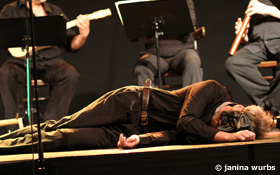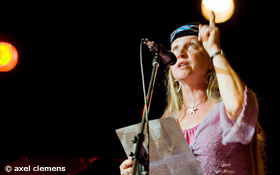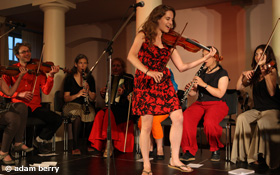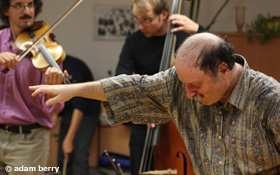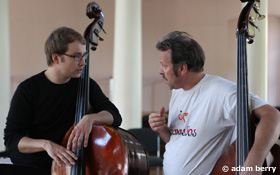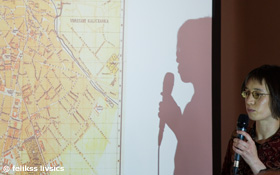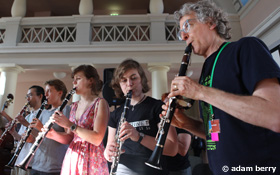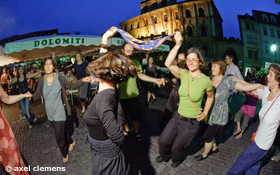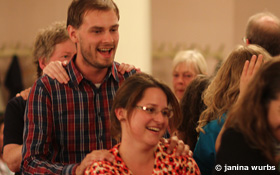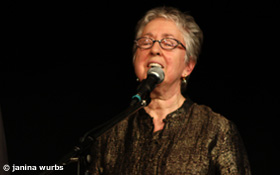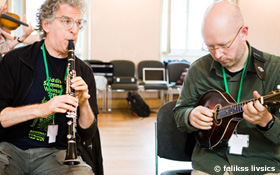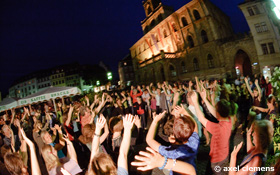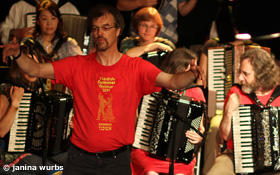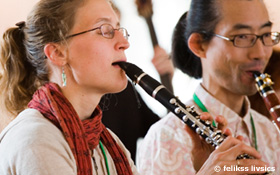"I really appreciate the holistic approach, bringing body and mind together."
"Self-awareness and individual expression are taught and strongly encouraged."
"I think the impact is too great to be put into words." (Voices of participants)
Why Yiddish Summer Weimar is different:
1. A learning community, not a shopping mall
Many things contribute to the special character of Yiddish Summer Weimar. We start with phenomenal teachers and artists. Then, each year a special topic is chosen that ties together all of the workshops, concerts, dance evenings, jam sessions, symposia and other events. We interpret traditions as expressions of intercultural processes, not as frozen objects, so our working methods also emphasize processes and questions rather than answers.
Cultures have many forms of expression, such as instrumental music, vocal music, dance, and more. Rather than follow the "shopping mall" concept, in which a large number of participants picks and chooses from parallel classes and may never even meet one another, we consciously choose to make time and space for one subject at a time in smaller workshops that last up to a week. The small number of teachers and participants and a single focus allow us to form a learning community and contributes to the famous intensity of the Weimar workshop experience.
Equally important is an approach that integrates many kinds of learning – intuitive, kinetic, emotional, intellectual, practical and theoretical. Almost all participants discover that they are strong in some of these and less developed in others, and the workshop challenges them to grow in ways that go far beyond the topics of the festival. Many participants experience changes that continue long after they've returned home.
Our participants and faculty often come from more than 20 countries and speak many languages, so communication is itself a challenge and develops on many verbal and non-verbal levels. Hard work and digesting new information during the day is balanced by very free jam sessions and dances in the cafés of Weimar at night, through which social relationships and networks grow, bringing the festival into people's real lives. Finally, concerts and other public events are not performance tests, but opportunities to bring a week of intensive work to a higher stage of development and share with a larger audience.
Yiddish Summer Weimar is a music and culture festival, yes, but more than that it's a chance to challenge boundaries, explore connections, and grow through encounters with others and with ourselves.
Why Yiddish Summer Weimar is different:
2. First the territory, then the map
Alfred Korzybski (1879-1950), the founder of General Semantics, remarked: "The map is not the territory." That means, don't confuse representations of things with the things themselves. In the case of music, the representation is the written score and the thing it represents is sound - music. However, most of us in the West learn music by first learning to read written notes. By doing so, we deeply distance ourselves from the territory of music itself. In Yiddish Summer Weimar and Winter Edition, our approach is always to start with music as sound - called learning music "by ear." How strange that there's a special term for that! We don't learn to paint "by eye" or learn to dance "by leg."
When you learn music "by ear" you learn not only one melody or harmony or piece, you learn a mode of perception that is perfectly matched to object of music itself. For this reason, we spend a lot of time learning music directly from people, the way that much music was traditionally transmitted from person to person and generation to generation. Traditional or "folk" music is perfectly adapted to this process - if it weren't, people wouldn't be able to learn it quickly and remember it. So learning "folk" music by ear is one way of directly exploring the territory of music, instead of the map. Another way is improvisation. When you improvise, you attend to your own musical impulses and act on them directly. There's no intermediate step of translating sound impulses into a system of visual representation (written notes) and then translating back again into sound. To be clear: written music is useful the way a map is, and we work with written music in Yiddish Summer Weimar, too. But only after we understand music as sound. First the territory, then the map.
Dr. Alan Bern
Our Philosophy
